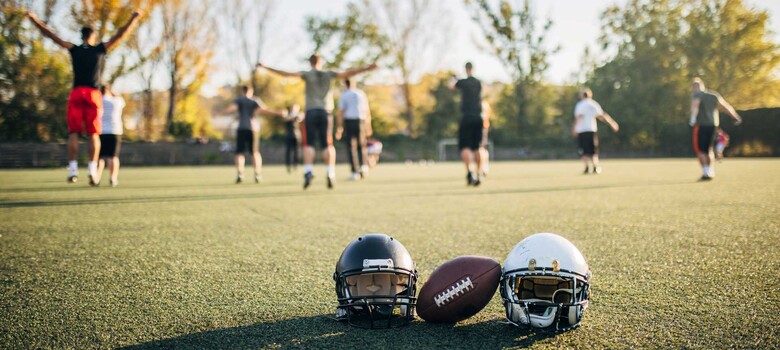ACL Injuries: What You Need to Know

Increasingly, more young athletes are tearing their ACLs despite the best preventive efforts of their coaches and athletic trainers. In this Q&A, Allison Toth, MD, a Duke orthopaedic surgeon and recognized ACL expert, explains why these injuries occur so frequently and what to do if your young athlete experiences an ACL tear.
What is the ACL?
The anterior cruciate ligament (ACL) is one of the primary ligaments that hold the bones in your knee together. The ACL helps stop the knee from twisting and the lower leg bone (the tibia) from sliding forward. ACL tears are one of the most common knee injuries.
Are ACL injuries preventable?
There is little data to show that these injuries are preventable, and if so, how to prevent them. Strictly run studies suggest that certain types of athletic conditioning can help, but the vast majority of prevention programs do not follow the same rigorous guidelines set up in those studies. According to NCAA injury surveillance data, ACL injuries continue to occur at a steady rate despite warm-up or training programs designed to prevent them.
Who is at risk?
Any athlete who plays a sport like football, soccer, or basketball that requires a quick stop, turn, pivot, or landing from a jump is at risk. Sudden, unplanned moves on the field or court are thought to lead to many of these ligament tears. Eight out of ten ACL injuries do not involve contact with another player.
How do I know if I have an ACL tear?
If you hear a pop, and your knee hurts, swells, and feels unstable (gives way), chances are high that you’ve torn your ACL. If you think you or your child has a torn ACL, see a sports medicine provider. This orthopaedic specialist will examine the knee. They may order an MRI to confirm the diagnosis and determine if surgery is recommended.
Is surgery a must?
Not always. ACL repair or reconstruction is usually recommended for patients under age 30 to restore knee stability and protect cartilage in the knee joint. We know that ACL reconstruction will allow athletes to return to sports that require cutting, pivoting, and jumping without difficulty. However, if you are over 40 and do not plan to engage in these types of sports again, you may decide against surgery.
How do I choose an ACL surgeon?
Experience counts. Ask your surgeon how many ACL reconstructions they perform per year. A minimum of 25 ACL surgeries per year is acceptable.
Next, find out what type of surgery they recommend. Repair of the ligament is less common than reconstruction. At Duke, we perform ACL repairs when appropriate -- when the ligament separates from the bone instead of tearing in the middle of the ligament, for example. ACL reconstruction is performed using the patient’s own tendon to make a new ligament. We call this an autograft. Occasionally, we use tendons from a donor -- known as an allograft -- when patients are older and require less use of their knee.
Finally, find out if your surgeon has a return-to-sport testing program to ensure physical and psychological readiness.
How soon can I get back to playing?
Eight to nine months of physical rehabilitation will get most athletes back to competitive play. Rehab should include a clear, gradual return-to-sport program for the athlete, their coach, and their trainer and formal physical and psychologic readiness testing.
If my ACL tore once, can it tear again after surgery?
It’s possible. Studies indicate that up to 30% of school-age soccer and basketball players will reinjure the same knee or the other knee. We know it’s important not to return to play too early. It’s also essential to get the proper physical rehabilitation. Still, some people may reinjure their knee despite best efforts. At Duke, we conduct ongoing research with the goal of limiting reinjury. We aim to determine the best method of fixing the ACL, whether to add additional procedures to augment ACL surgery, and the best return-to-sport testing.
Will I get arthritis in the future?
Time will tell. The ACL surgeries offered now weren’t being done 20 years ago. We don’t have the long-term data to know if they will lower the incidence of arthritis that is currently associated with ACL injury, with or without surgery. We do know that the health of the meniscus -- the tissue that cushions and protects the knee joint -- at the time of ACL tear is an important factor in arthritis developing later, so preserving the meniscus is essential.




